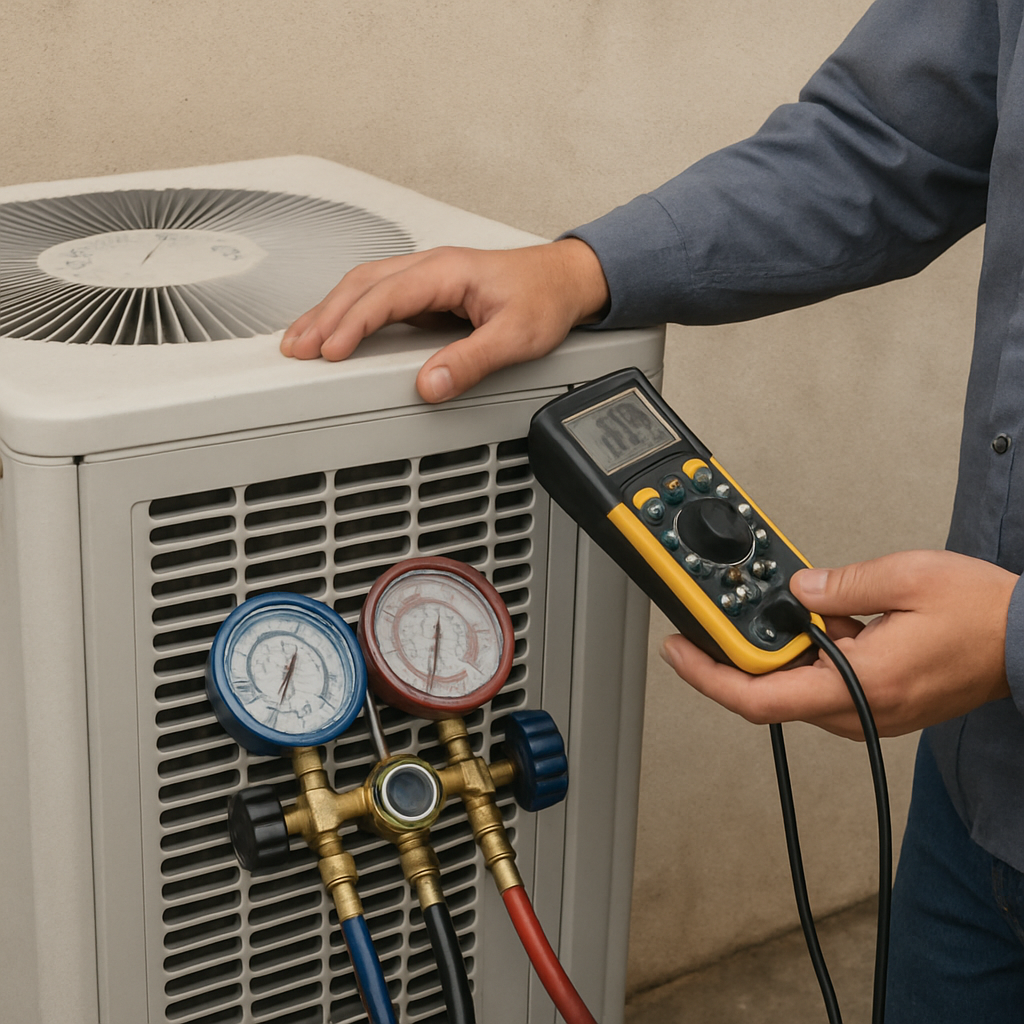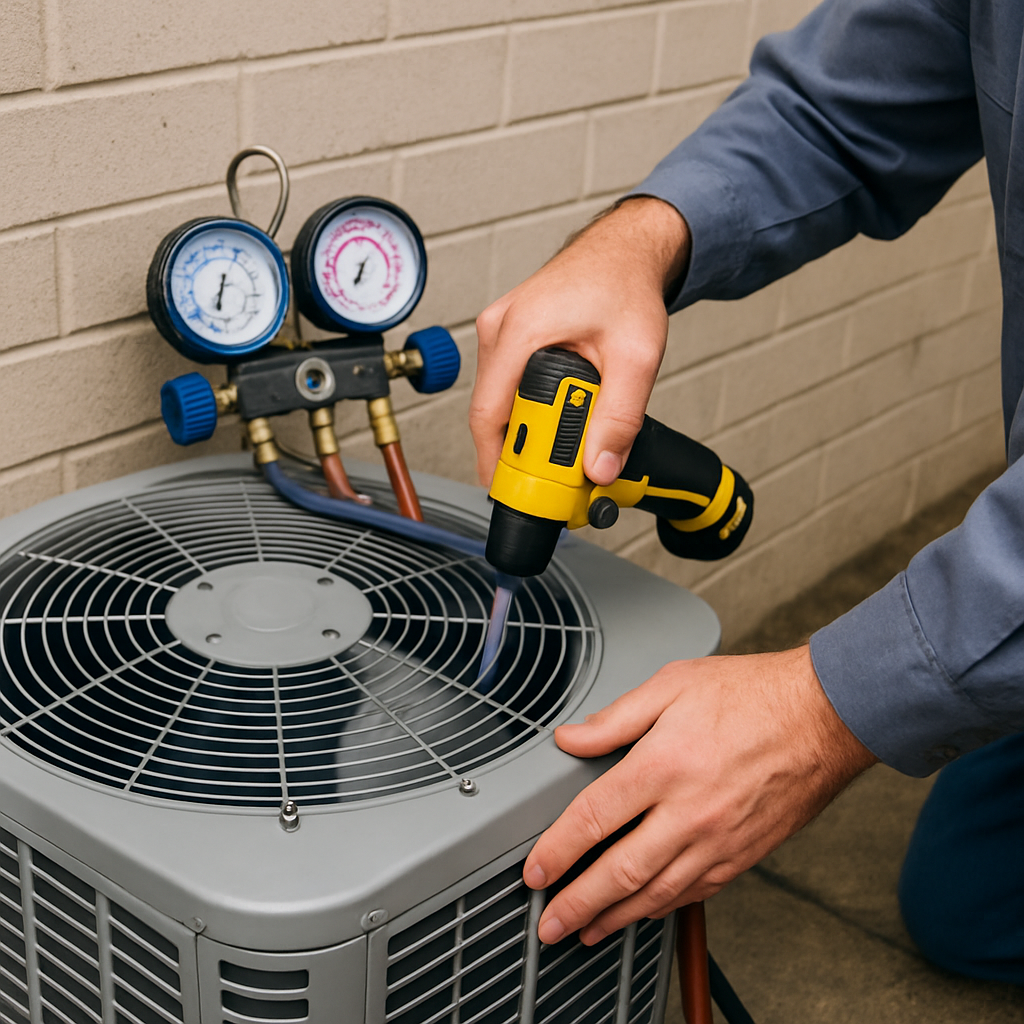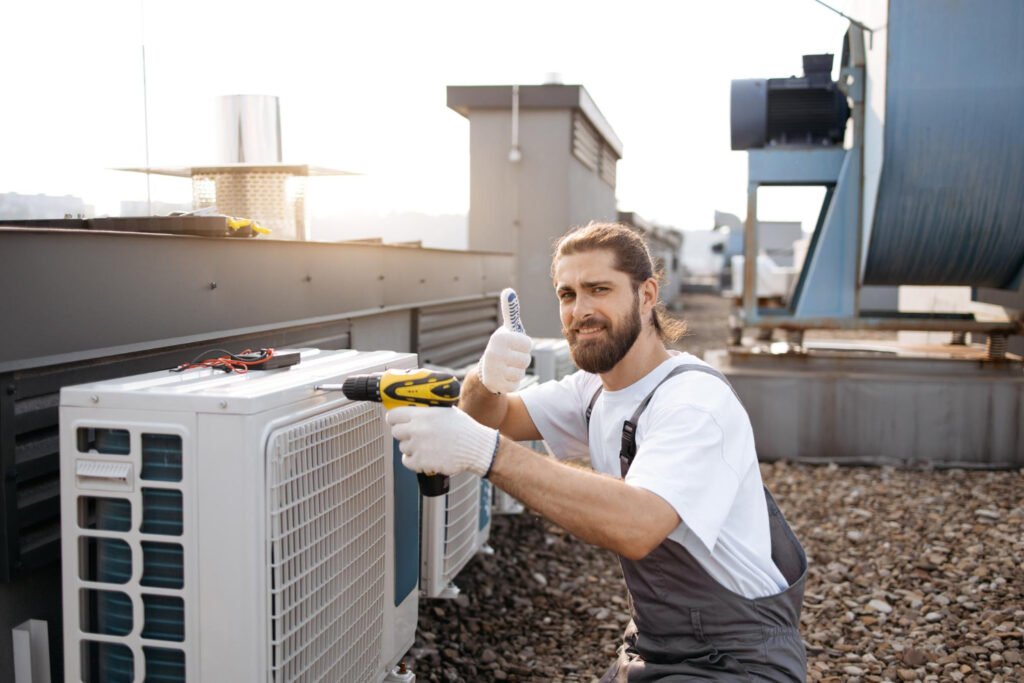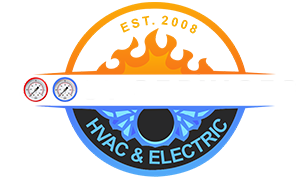When your air conditioner is running but not cooling your house, it can be both frustrating and uncomfortable, especially during the hot summer months. The sweltering heat can make indoor environments unbearable, pushing you to seek quick fixes. Understanding the root causes behind AC Not Cooling effectively and taking steps to resolve the issue can save you time, money, and unnecessary stress. Not only will this knowledge empower you to handle minor issues yourself, but it also equips you with the information needed when consulting with a professional. In this guide, we’ll explore common reasons why your air conditioner may not be cooling and provide practical solutions to help you restore a comfortable indoor climate.

Table of Contents
Common Reasons Your Air Conditioner Runs but Doesn’t Cool
An air conditioning unit that runs but doesn’t cool can be attributed to several factors. It’s essential to identify the root cause to effectively address the problem and restore your home’s comfort. Here are some common reasons:
1. Incorrect Thermostat Settings
One of the simplest issues could be incorrect thermostat settings. Often overlooked, the thermostat acts as the brain of your air conditioning system, dictating when and how the AC should operate. Ensure that the thermostat is set to “cool” mode and the temperature setting is lower than the current room temperature. A programmable thermostat may require a reset if there’s been a power outage. If you have recently replaced the batteries or experienced a power surge, recalibrating the thermostat might be necessary to ensure it communicates effectively with the AC unit.
2. Dirty Air Filters
Air filters play a crucial role in maintaining airflow. They trap dust, pollen, and other airborne particles, ensuring that the air circulating in your home is clean. When they’re clogged with dust and debris, the air conditioner has to work harder, which can lead to it not cooling efficiently. This increased strain can also lead to higher energy bills and potential damage to the unit over time. It’s recommended to check and replace air filters every one to three months. Regular maintenance of the filters not only enhances cooling efficiency but also improves indoor air quality, which is essential for the health of the household.

3. Blocked or Dirty Condenser Unit
The condenser unit, located outside, can become blocked by leaves, dirt, and other debris. This blockage restricts airflow and can prevent the unit from cooling effectively. The condenser’s primary role is to release the heat absorbed from inside your home to the outside environment. If airflow is restricted, the AC system can’t efficiently expel heat, causing it to underperform. Regularly inspect and clean the area around the condenser to ensure it’s free from obstructions. Consider using a soft brush or a gentle stream of water to clean the coils, which can improve the unit’s efficiency and longevity.
4. Refrigerant Issues
The refrigerant is essential for cooling air within the AC system. It cycles through the system, absorbing and releasing heat to cool the air effectively. If there’s a leak or the refrigerant levels are low, it can impact the cooling efficiency. Refrigerant leaks are not only a cooling issue but can also be harmful to the environment. Unlike air filters, refrigerant issues should be addressed by a professional technician, as handling refrigerants requires specific expertise and equipment. Regular checks by a professional can prevent leaks and ensure the system operates within safe and efficient parameters.
5. Faulty AC Components
Components such as capacitors, compressors, or motors can wear out over time. These parts work in tandem to ensure your AC unit operates smoothly. If any of these parts are malfunctioning, it can hinder the cooling process. Symptoms of faulty components can include strange noises, the unit not starting, or it cycling on and off frequently. A professional HVAC technician should inspect and replace faulty components as needed. Timely replacement or repair of these parts can prevent more significant damage to the system and avoid costly repairs in the future.
Step-by-Step Guide to Troubleshooting Your AC
Here’s a structured approach to diagnosing and fixing your AC problems:
Step 1: Check Thermostat Settings
Ensure your thermostat is set to “cool” and that the desired temperature is lower than the room temperature. This is the first and simplest step in troubleshooting. If it’s a programmable thermostat, consider resetting the schedule to ensure it’s functioning correctly. Familiarize yourself with your thermostat’s manual to understand its features and settings better, which can help prevent future issues.
Step 2: Inspect and Replace Air Filters

Locate your air filters, typically found near the return air duct, and check their condition. Dirty filters can significantly impair airflow, leading to poor cooling performance. If they appear dirty, replace them with new filters. This simple step can significantly improve airflow and cooling efficiency. Additionally, using high-quality filters can enhance your system’s performance and extend its lifespan, providing better air quality and energy efficiency.
Step 3: Clear the Condenser Unit
Examine the outdoor condenser unit for any visible debris or blockages. This step is crucial, especially if you live in an area with frequent foliage shedding or high dust levels. Use a garden hose to gently wash off dirt and leaves. Ensure there’s at least a two-foot clearance around the unit for optimal airflow. Regularly trimming nearby shrubs and ensuring proper spacing can help maintain efficient operation of the condenser unit.
Step 4: Address Refrigerant Issues
If you’ve completed the above steps and your AC still isn’t cooling, it could be a refrigerant issue. Low refrigerant levels can severely impact the system’s ability to cool. Contact a certified HVAC technician to inspect and recharge the refrigerant if necessary. This is not a DIY task due to the complexity and safety concerns involved. Regular professional maintenance can prevent such issues, ensuring the refrigerant levels are adequate and the system is leak-free.
Step 5: Professional Inspection for Faulty Components
Should the problem persist, schedule an inspection with a professional HVAC technician. They can diagnose issues with internal components like the compressor or capacitors, ensuring your system is repaired safely and efficiently. Professional technicians have the tools and expertise to identify problems that may not be apparent to the untrained eye. Regular inspections can catch potential issues early, saving you from unexpected breakdowns and costly repairs.
Preventive Measures for Optimal AC Performance
To maintain a reliable and efficient air conditioning system, consider these preventive measures:
- Regular Maintenance: Schedule annual maintenance checks with a professional to ensure all components are in good working order. This proactive approach can identify and resolve issues before they become major problems.
- Clean Surroundings: Keep the area around the outdoor unit clear of plants, debris, and other obstructions. This not only ensures optimal performance but also prolongs the life of the unit by preventing unnecessary strain.
- Monitor Performance: Be mindful of changes in your AC’s performance, such as unusual noises or reduced cooling, and address them promptly. Early detection of issues can prevent more significant problems and extend the life of your system.
When to Call a Professional for AC Not Cooling Issues
While some issues can be resolved with simple fixes, others require professional intervention. Complex problems, such as electrical faults or refrigerant leaks, should always be handled by trained technicians. If your AC continues to run but does not cool after performing basic troubleshooting, it’s time to call in an expert. Professionals have the tools and knowledge to diagnose and fix complex issues, ensuring your system operates efficiently. Regular professional check-ups can also provide peace of mind, knowing your AC is in optimal condition.
Conclusion
An air conditioner that isn’t cooling can disrupt your comfort and peace of mind. The discomfort can be especially pronounced during peak summer months when effective cooling is most needed. By understanding common issues and following a systematic approach to troubleshooting, you can often resolve the problem quickly and effectively. Remember, regular maintenance and prompt attention to issues are key to prolonging the life of your AC unit and ensuring it performs at its best. If in doubt, don’t hesitate to seek professional assistance to maintain a comfortable and cool home environment. Investing in regular maintenance and expert advice not only enhances your AC’s efficiency but also contributes to a more sustainable and cost-effective home cooling strategy.
Troubleshooting FAQ — AC Not Cooling Your Home
How much does a new air conditioner and installation cost?
The total price varies by system type, efficiency, home size, ductwork condition, and installation complexity. In many U.S. markets, a complete replacement (equipment + labor) commonly ranges from $5,000 to $14,000, with outliers depending on scope.
What factors have the biggest impact on AC price?
The main cost drivers typically include:
- System size/capacity (BTUs or tons)
- Energy efficiency rating (SEER2/EER)
- Installation complexity and accessibility
- Ductwork condition, repairs, or redesign
- Electrical upgrades and permit requirements
- Local labor rates and seasonal demand
Should I add a contingency buffer to my budget?
Yes—plan a 10–20% buffer for surprises such as duct leaks, electrical updates, line-set replacement, or structural adjustments discovered during installation.
What additional or “hidden” costs might appear during installation?
Potential add-ons may include:
- Removal and disposal of old equipment
- Duct sealing, repairs, or full replacement
- Thermostat upgrade (including smart thermostats)
- Electrical work (new breaker, wiring, disconnect)
- Permit fees and post-install inspections
- Concrete pad, vibration isolators, or drain improvements
Is paying more for a high-efficiency unit worth it?
Often yes. Higher-efficiency systems cost more upfront but reduce monthly energy bills, may qualify for rebates, and usually deliver better comfort and noise levels over the equipment’s life.
Are financing options, rebates, or tax credits available?
Many HVAC providers offer payment plans and financing. You may also qualify for utility rebates, manufacturer promotions, and local/state or federal incentives for high-efficiency equipment. Check current programs for your ZIP code before purchasing.
How do I prepare to get accurate quotes?
To receive apples-to-apples proposals:
- Know your home’s square footage and insulation/window conditions
- Share details about existing equipment and duct layout
- Decide on desired efficiency and comfort features
- Request itemized estimates with model numbers
- Compare at least 2–3 bids, including warranties and scope
How long does AC installation usually take?
Most straight replacements take about one day; installs needing new ductwork or electrical upgrades typically require two to three days or more.
How can I choose a reliable HVAC contractor?
Use this quick checklist:
- Active licenses, insurance, and certifications
- Proper load calculation (Manual J) rather than “rule of thumb” sizing
- Clear, itemized, written proposal and timeline
- Strong reviews, references, and responsive communication
- Solid labor and parts warranties with after-sale support
When is it smarter to replace instead of repair?
Consider replacement if the unit is 8–12 years old, needs frequent or costly repairs, struggles in peak weather, or has poor efficiency compared to modern systems.
How do I know what AC size (tons/BTUs) I need?
Proper sizing should be based on a Manual J load calculation accounting for square footage, insulation, windows, orientation, air leakage, and climate. Oversizing or undersizing can reduce comfort and efficiency.
What warranties and maintenance should I budget for?
Expect separate equipment (manufacturer) and labor (installer) warranties. Budget for annual maintenance—filter changes, coil cleaning, drain and refrigerant checks—to protect performance and keep warranties valid.
Can I reuse my existing ductwork?
Sometimes. A contractor should test ducts for leakage, sizing, and layout. Reusing leaky or undersized ducts wastes energy and reduces comfort; sealing, resizing, or replacing may be recommended.
Do I need permits and inspections?
In most jurisdictions, yes. Professional contractors pull required permits and schedule inspections to ensure the installation meets safety codes and manufacturer specifications.
How can I lower the total cost without sacrificing quality?
Try these strategies:
- Get multiple itemized bids and compare scope—not just price
- Target high-value efficiency (not necessarily the absolute top tier)
- Leverage utility rebates and seasonal promotions
- Bundle logical upgrades (e.g., duct sealing) when cost-effective
- Choose a reputable installer—quality workmanship prevents costly issues later

